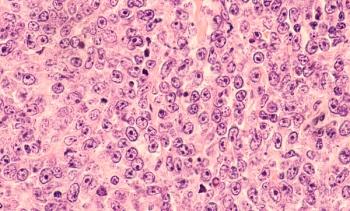
Combining Liquid and Tissue Biopsies for Better Lung Cancer Care
Edgardo S. Santos, MD, FACP, FASCO, discussed the barriers to precision medicine in lung cancer treatment, including patient concerns about technology understanding and insurance coverage, as well as the reliance on traditional tissue biopsies, emphasizing the benefits of combining liquid and tissue biopsies to improve treatment outcomes and clinical trial eligibility.
Edgardo S. Santos, MD, FACP, FASCO, a hematologist and medical oncologist at the Oncology Institute of Hope and Innovation, discussed the barriers to implementing precision medicine in lung cancer treatment, highlighting patient concerns about understanding the technology and insurance coverage, particularly for Medicare patients.
He also noted that some clinicians continue to rely on traditional tissue biopsies, despite the potential of liquid biopsies. While both biopsy methods have limitations in sensitivity, combining them increases the likelihood of identifying key drivers and pathways, enhancing treatment options and clinical trial eligibility for patients. Santos emphasized the importance of using both technologies together for optimal patient care.
This transcript has been lightly edited for clarity.
Transcript
What are the barriers to implementing precision medicine in lung cancer treatment, and how can they be overcome?
Well, perhaps one of the barriers that we have could be [viewed] from different angles. Sometimes the patient themselves don't understand the concept of this technology or perhaps they are afraid that it will not be covered by the insurance but I need to reassure the patient, especially Medicare patients, that some of these technologies are already approved for Medicare patients and will be covered. So that could be a barrier.
The other barrier that we have, perhaps, is that some clinicians still rely on a tissue biopsy. Don't get me wrong, tissue biopsy continues to be a—I don't want to say the gold standard because if we do a liquid biopsy first and you find what we are looking, end of discussion. The issue here is that both of them, either tissue biopsy or liquid biopsy, they are not perfect. The sensitivity of both is 80%, so they are complementary.
What we have found in research, and it has been very well described in the literature, is that when we put both of them together, we increase the number of drivers and pathways that can help the patient down the line with therapy and also increase the possibility for the patient to be included in clinical trials. So the best thing that [can be done]—in my opinion and the opinion of many other [specialists], specifically, in lung cancer—is that we need to combine both technologies [and use them] at the same time so we can serve our patients in a better way.
Newsletter
Stay ahead of policy, cost, and value—subscribe to AJMC for expert insights at the intersection of clinical care and health economics.







































